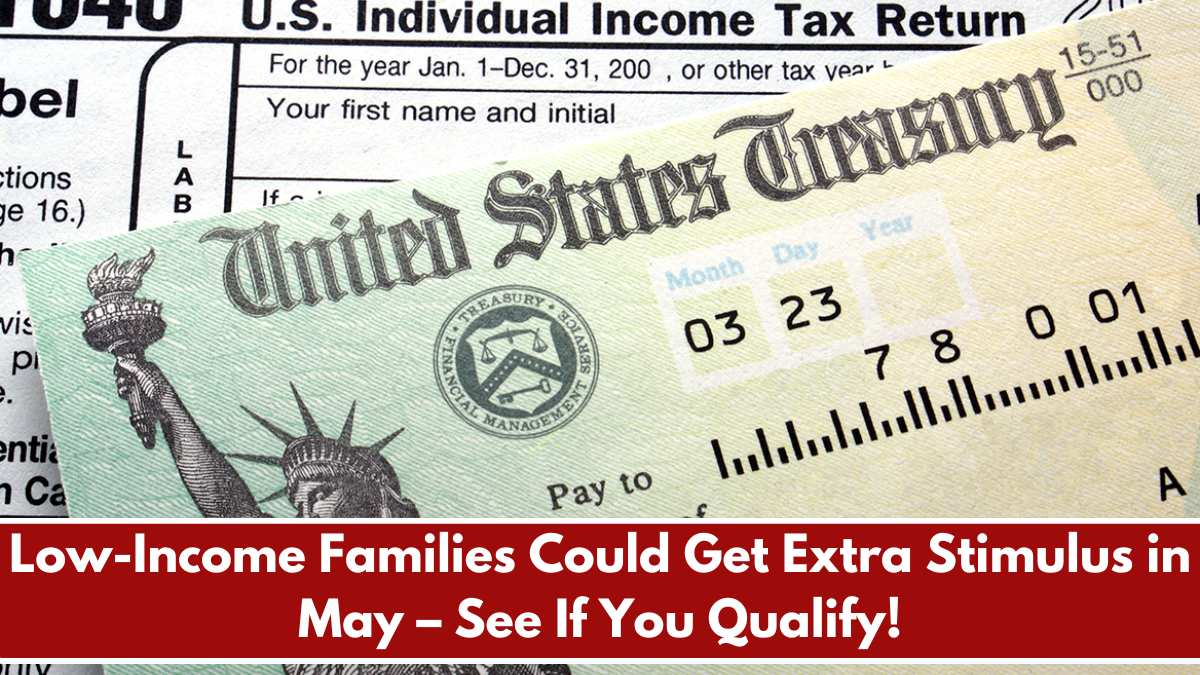A new wave of financial relief could be arriving for millions of low-income families this May. Government officials have hinted at an additional stimulus payout specifically targeting households with limited income, aiming to combat rising living costs and provide urgent support.
If your family has been struggling to keep up with groceries, rent, or utilities, this could be the financial break you’ve been waiting for. But not everyone qualifies — it’s important to know the requirements and act quickly to claim your funds.
What Is This Extra Stimulus Payment?
The proposed payment is part of a targeted aid package meant to assist low- and very low-income families. This stimulus will not be a broad distribution like the previous checks — instead, it’s focused on families who meet specific income and household requirements.
Depending on your household size and income bracket, you could receive up to $1,200 in additional stimulus relief, starting as early as May 15.
Who Qualifies for the Extra Stimulus?
Eligibility will be based on household income, number of dependents, and whether you’ve filed taxes recently. The goal is to help families most affected by inflation and economic pressure.
Check the table below for a simplified look at eligibility:
| Household Size | Max Income to Qualify | Estimated Payment Amount |
|---|---|---|
| Single (no kids) | $30,000 | $500 |
| Single (1+ dependents) | $40,000 | $700 |
| Married (no kids) | $50,000 | $800 |
| Married (1+ dependents) | $60,000 | $1,000 |
| Larger families (3+ kids) | $65,000 | Up to $1,200 |
Families that already receive government benefits such as SNAP, Medicaid, or SSI may also automatically qualify for this payment — even if they haven’t filed recent tax returns.
How to Apply or Claim Your Stimulus
If you’ve filed your 2023 taxes, you may not need to take any action — payments could be sent out automatically. However, if you didn’t file or have zero income, you’ll likely need to submit a simple application or update your information with the IRS or relevant state agency.
To prepare:
- Gather your Social Security Numbers for everyone in your household
- Ensure your address and direct deposit info is current
- Look for updates from the IRS or local assistance offices
- Submit a simple return or online form if needed
More information and claim tools will likely be released in the first week of May, so keep an eye out.
FAQ’s:
1. Can I still get this payment if I didn’t qualify for past stimulus checks?
Yes, this stimulus is targeted at low-income households and uses different criteria than past rounds.
2. Is it available in all states?
While it’s a federal initiative, some state programs may offer additional supplements, depending on funding.
3. Will I lose other benefits if I accept this payment?
No. This payment is considered non-taxable aid and does not count against benefits like SNAP or Medicaid.
4. What if I didn’t file taxes? Can I still get it?
You may still qualify by submitting a simplified return or using a non-filer tool. Details will be released in early May.
5. How will I receive the money?
Payments will be sent via direct deposit or mailed checks, depending on the info the IRS has on file.
